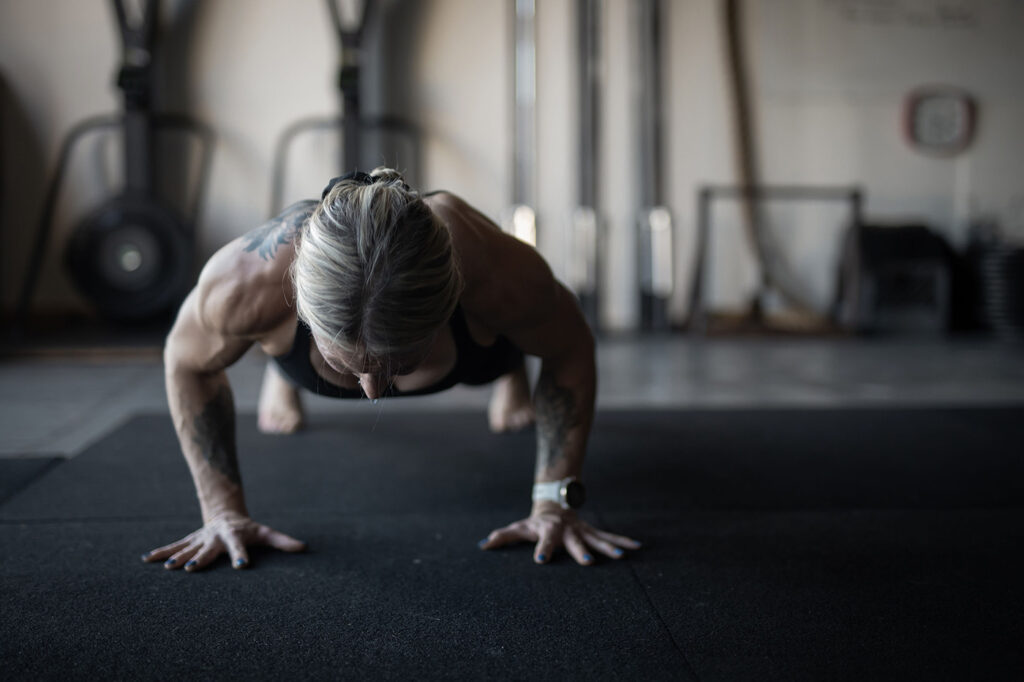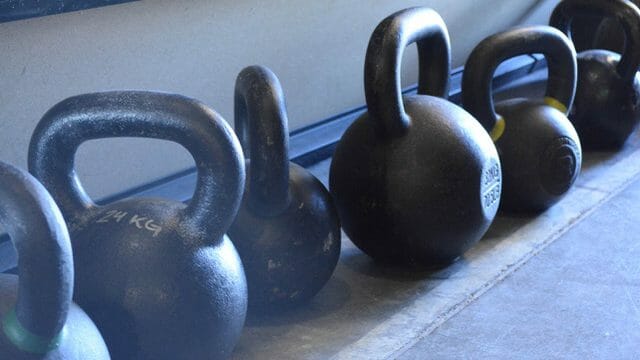It seems that in the past few years, the term “active recovery” has become a catchall for any sort of training session in which you deviate from whatever plan you’re currently following to focus on slowing things down and refreshing the body. While on the surface that approach seems all well and good, the issue I see time and again is that true active recovery becomes misconstrued through the use of high-intensity conditioning sessions, heavier lifting days, long runs, or any combination of the above and is simply given the title of “active recovery” to appease the athlete’s mental state.
Active recovery is not a workout for increasing work capacity. It is a light session to speed recovery so that you can get back to capacity building ASAP. You should feel better at the end of this session than you did at the beginning.
The purpose of this article is to take a step back, discuss the reasons for active recovery, and give some examples of how you can be more effective in your own training with a more appropriate approach.
Why Active Recovery?
Broadly speaking, I put dedicated recovery sessions into one of two buckets: an active/structural option and a more passive/rest day option. The former is what I’ll hit on here, while the latter should be pretty self-explanatory: taking a day off from training to completely rest and recover.
The “active” component of active recovery is important. What I’ve noticed over the years is that if athletes take an entire day off after a hard training session, they tend to come back sore, lethargic, or less than optimal. Integrating some element of movement into a dedicated training session, however, often leaves athletes feeling fresh and loose. If you attach a mental component to the session as well, which I’ll discuss in this article, the benefits increase exponentially.
Why You Might Be Doing It Wrong
I mentioned the importance of integrated movement above, but I need to emphasize to you the fine line between effective movement and excessive movement. Instagram abounds with posts of athletes doing high-intensity rowing intervals on their “active recovery” day and finishing on their backs in a pile of sweat. This is not active recovery. On the flip side, many online programs will sell the idea of a 60-to-90-minute steady state run as an active recovery session. Unless you are a distance-trained athlete doing 100+ miles of total volume a week, 60–90 minutes of running is not an active recovery session. It’s an aerobic capacity event and it’s lazy programming.
With that in mind, here are a few of the rules and guidelines I keep in mind when writing active recovery sessions for myself and for my athletes:
1. Prioritize unilateral and/or isometric movements.
Really there’s two reasons why I do this. First, most training programs inadvertently leave out unilateral (single-limb) and/or isometric (holds) movements. By intentionally placing these in my active recovery sessions, I make sure to avoid this error. For those same reasons, introducing these two types of movements during active recovery does a great job of balancing out your training and shoring up any weaknesses you may not have noticed by doing consistent bilateral movements.
2. Avoid barbells unless you’ve got a good reason for including them.
Again, for the same reasons as rule #1, I try to avoid barbells when at all possible. I find that the barbell tends to permeate every aspect of a traditional training program, and when switching gears to a recovery session it’s nice to mix things up. Further, I find that athletes are so used to attacking a barbell with an aggressive mindset that including them in an active recovery session can lead to a more competitive/nonrecovery mindset. It may not seem like much, but I assure you you’ll notice the difference.
3. Keep cyclical movements nonimpact.
I’ll probably catch some flak here, but I try to keep running out of my active recovery sessions unless, as mentioned above, you are a well-conditioned runner—and even then these need to be very low-intensity “granny jogs.” I don’t think people truly understand the high-impact nature of running, and especially when done at slow speeds (not to mention the negative effects it can have on your normal running gait). By taking athletes off the road and putting them onto a rower, ski erg, assault bike, etc., you’re not only creating a new stimulus, but you’re also giving their weight-bearing frame a break … even if it’s just for a day. Swimming is perhaps one of the best recovery workouts for any athlete. It’s non-weight-bearing, the water keeps body temps lower, and you’re horizontal so that your heart does not have to work against gravity.

4. Rotate between cyclical work and structural work.
This isn’t a hard rule so much as it is a preference. I’ve seen a lot of success rotating between 10-to-15-minute blocks of cyclical work and structural work. For example, a 15-minute row followed by 15 minutes of holds, carries, hangs, rotations, etc. makes for a nice 30-minute active recovery session. You’ll see a further example of this in the sample workout included below.
I’ll add a caveat here: don’t be afraid to mix things up to make it fun. For example, instead of doing a row for 10 minutes it can be equally as effective to rotate between a 2-minute row and a 2-minute bike for a total of 10 minutes if it means the athlete is more likely to enjoy himself. Just be sure that the overall intensity is very low. Low-intensity aerobic work has a powerful restorative effect.
5. Prioritize breathing.
This is a coaching cue more than a programming idea, but it’s important to help athletes understand that breathing needs to be a priority during active recovery sessions. Focusing on nose breathing, for example, does a great job of autoregulating the intensity of the session. Additionally, focused breathing has been shown to have a phenomenal carryover to the mental side of training (think meditation).
Example Active Recovery Training Session
With all that in mind, let’s take a look at an example 40-minute active recovery session using the rules stated above.
Sample Active Recovery Session
A) 10 minutes alternating:
2-min row @ 7 damper
2-min assault bike @ 55 RPM
B) 10 minutes for quality:
150-meter ski @ 7 damper
20-sec supinated bar hang
10x KB suitcase deadlift per side (24 kg)
10x plank shoulder taps (L + R = 1 rep)
C) 10 minutes alternating:
2-min row @ 7 damper
2-min assault bike @ 55 RPM
D) 10 minutes for quality:
10x push-up to elbow plank
10x DB bent-over row (moderate weights)
30-sec half-kneeling Pallof hold per side
5x strict toes-to-bar
Training Notes
Using the previous session, let’s walk through each component:
Parts A and C
As I mentioned earlier, I like to rotate between two or three different modalities for the longer, steady state intervals. I find that it keeps things more engaging and the time passes more quickly. Again, I’ve deliberately stayed away from running here because I want this to be a nonimpact segment.
Part B
This segment is specifically designed to target the shoulders. Broadly speaking, I like to have a focus for my movement/structural segments as a way of keeping things organized (shoulders, hips, low back, etc.).
Ski: Nothing complicated here. Just introducing another nonimpact modality
Bar hang: The supinated grip serves to address an underutilized element of grip strength. Athletes fall in love with a pronated grip on everything, so it helps to switch things up.
Suitcase deadlift: A weighted, unilateral component that also targets the core
Plank shoulder taps: Generally speaking, I’d consider this an isometric piece with the addition of some anti-rotational work introduced by having the shoulder taps.
Part D
As with Part B, there is a theme to this segment: lower back.
Push-up to elbow plank: This serves a similar purpose to the plank shoulder taps in that it’s isometric and anti-rotational.
DB bent-over row: A mid-back, unilateral pulling exercise. Straightforward.
Half-kneeling Pallof hold: Another isometric/anti-rotational movement. This is an excellent way to not only slow down the segment but also introduce some movement awareness to athletes who aren’t used to consciously engaging their core.
Toes-to-bar: It’s important to keep these strict and engage the lower abdominal region versus simply flexing at the hips. I’d also emphasize a slow eccentric phase to promote control of the entire range of motion.
Closing Thoughts
The takeaway point here is that when planning an active recovery session, the emphasis must first be on the recovery. This is not a workout for increasing work capacity. It is a light session to speed recovery so that you can get back to capacity building ASAP. You should feel better at the end of this session than at the beginning. Once that becomes the priority, the “active” component can be used, as in my example above, to fill in the nuts and bolts. Be hyperaware of what you’re doing and why you’re doing it. Focus on breathing, exercise selection, and the movements themselves. You should finish each of these sessions feeling refreshed, energized, and ready for the next day’s training.
This article was originally published by Drew Hammond.


2 Comments
Pingback: 7 Exercises for Stronger Hamstrings – Pimbletree.com
Pingback: 7 Exercises for Stronger Hamstrings - Health And Fitness Teacher